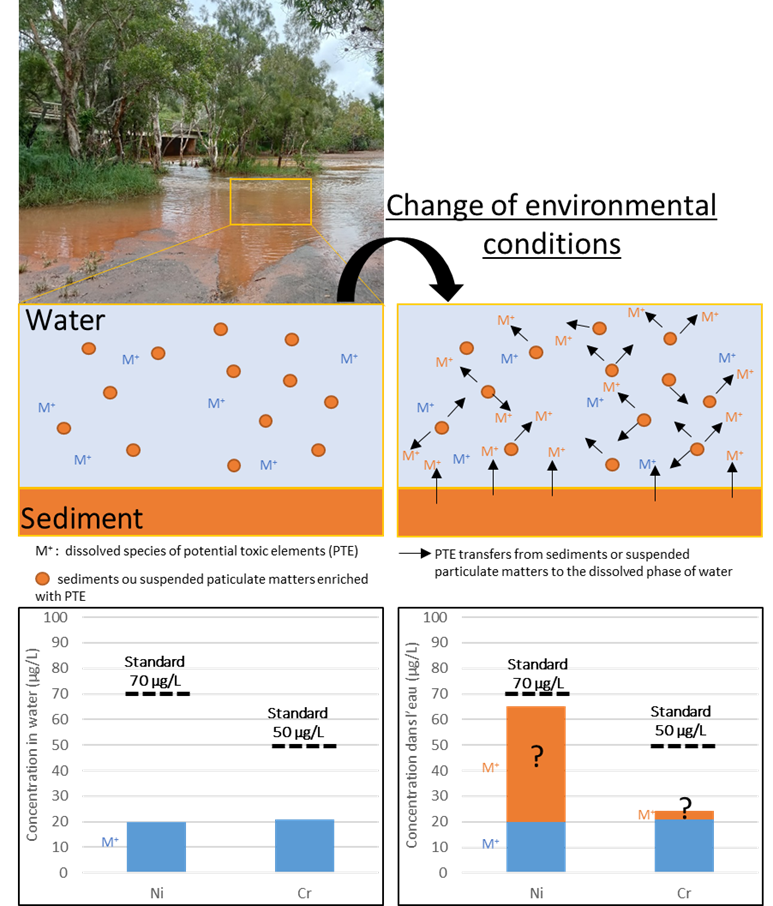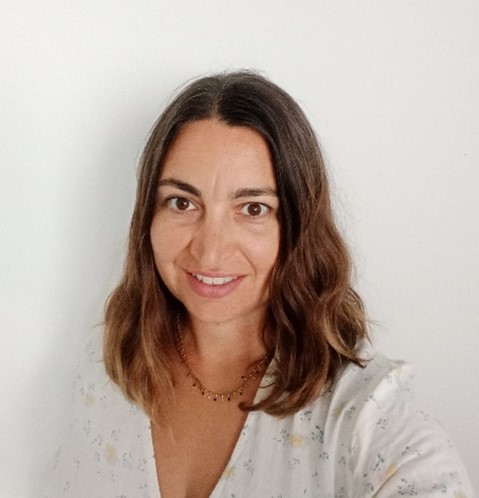Academy of Excellence "Space, Environment, Risk and Resilience"
Quality of water resources in New Caledonia
- A. BARATS -
How can the geology, physicochemical factors and the content in suspended particulate matter impact water quality in a tropical environment (New Caledonia)?
Academy Highlight
By assessing water quality and defining future standards for New Caledonia, this project will ensure “sustainable management of water and healthy lives for all”. It also proposes recommendations to protect and promote sustainable use of terrestrial ecosystems.
The project
In New Caledonia, 61% of surface water is used to supply drinking water and 24% of water resources come from ultramafic geological formations. Ultramafic rocks are extensively exploited in open-cast mines because they are rich in metals such as nickel, chromium, and cobalt. The quality of water resources is vulnerable and does not always comply with the drinking water guidelines defined by the World Health Organization. For instance, concentrations of arsenic and chromium in the dissolved phase of water can exceed these standards. The quality of water resources is also threatened by the presence of suspended particulate matters (SPM) in river water, which can be enriched with potentially toxic elements (PTEs), such as metals or metalloids. The quantity of SPM in water depends on natural processes and human activities, such as erosion due to the semi-tropical climate, soil denudation caused by invasive species or fires, and mining activities. PTEs contained in SPM can be released in the dissolved phase of water. The physico-chemical conditions of the water, such as temperature, pH, and the amount of dissolved oxygen, as well as the chemical composition of SPM, directly affect the solid/liquid transfer of PTEs and these phenomena can deteriorate water quality. Available data on water quality typically pertains to the dissolved phase of water and mainly in ultramafic catchment areas. This project proposes an innovative approach that takes into account both the geological diversity of the island and the presence of SPM transported by river water. Our study aims to characterize the quality of surface water in New Caledonia from rivers that drain the two main geological formations: ultramafic and volcano-sedimentary substrates (particularly the volcano-sedimentary catchment areas which have received little attention to date). Reference concentrations in surface water will be determined for nickel, cobalt, chromium, iron, manganese, and arsenic. These data will be useful for differentiating natural background levels from anthropogenic contributions. The results will also serve to establish environmental quality standards specific to New Caledonia. This study will also examine PTE reactivity and more particularly their transfer from the particulate phase to the dissolved phase of water. The physico-chemical conditions that contribute to these solid/liquid transfers and subsequently, possible degradation of water resources, will be defined.

The +
This innovative method will simplify sampling protocols. The preservation, storage and shipments of dried filters instead of liters of water will be easier (less heavy and bulky). The new development of laser ablation-ICPMS, will allow rapid, quantitative and direct analyses of water particles collected on filters.
What's next ?
The project also aims to strengthen collaborative research with the University of Nouméa by proposing a simplified methodological approach to address an essential question of societal interest. The differentiation between the natural levels of contaminants (heavy metals) and the anthropogenic levels will lead to better regulation policies.
Project informations
| Scientific field: Environmental chemistry, Hydrology |
Keywords: Water quality and resources Sustainable management Contamination Metals Risk |
| Partners : | Budget: €203,100, including €6,500 from Academy 3 |
| Project members: Aurélie Barats Christophe Renac Sylvain Gallet Peggy Gunkel-Grillon Christophe Pécheyran, |
Students involved: Chloé Dubernet (PhD) |
Scientific promotion of the project
- Mobility of metals in typical rocks from ultramafic substrates in New Caledonia, Annual conference of the Clay Minerals Society, C. Dubernet, A. Barats, C. Renac, P. Gunkel-Grillon, M. Mathian, F. Pattier, K. Gututauava, poster, Annual conference of clays and mineral society, June 3-6, 2024, Hawai, USA, poster.
- How do physicochemical factors and suspended particulate matter impact the metal content of river water in a tropical environment (New Caledonia)? C. Dubernet, A. Barats, C. Renac, P. Gunkel-Grillon, S. Gallet, A. Mexias, L. Gomes, C. Hurel, M. Alberola, I. Desriaux, M. Lemestre, S. Russet, M. Mathian, F. Pattier, C. Buzet, C. Diart, poster, SETAC Europe 34th annual meeting, May 5-9, 2024, Sevilla, Spain, poster.
- Contribution of suspended particulate matter in assessing river water quality in ultramafic massifs, New Caledonia, C. Dubernet, A. Barats, C. Renac, P. Gunkel-Grillon, S. Gallet, A. Mexias, L. Gomes, C. Hurel, M. Lemestre, S. Russet, Spectratom, 4-7 juin 2024, Pau, France, oral presentation.


















